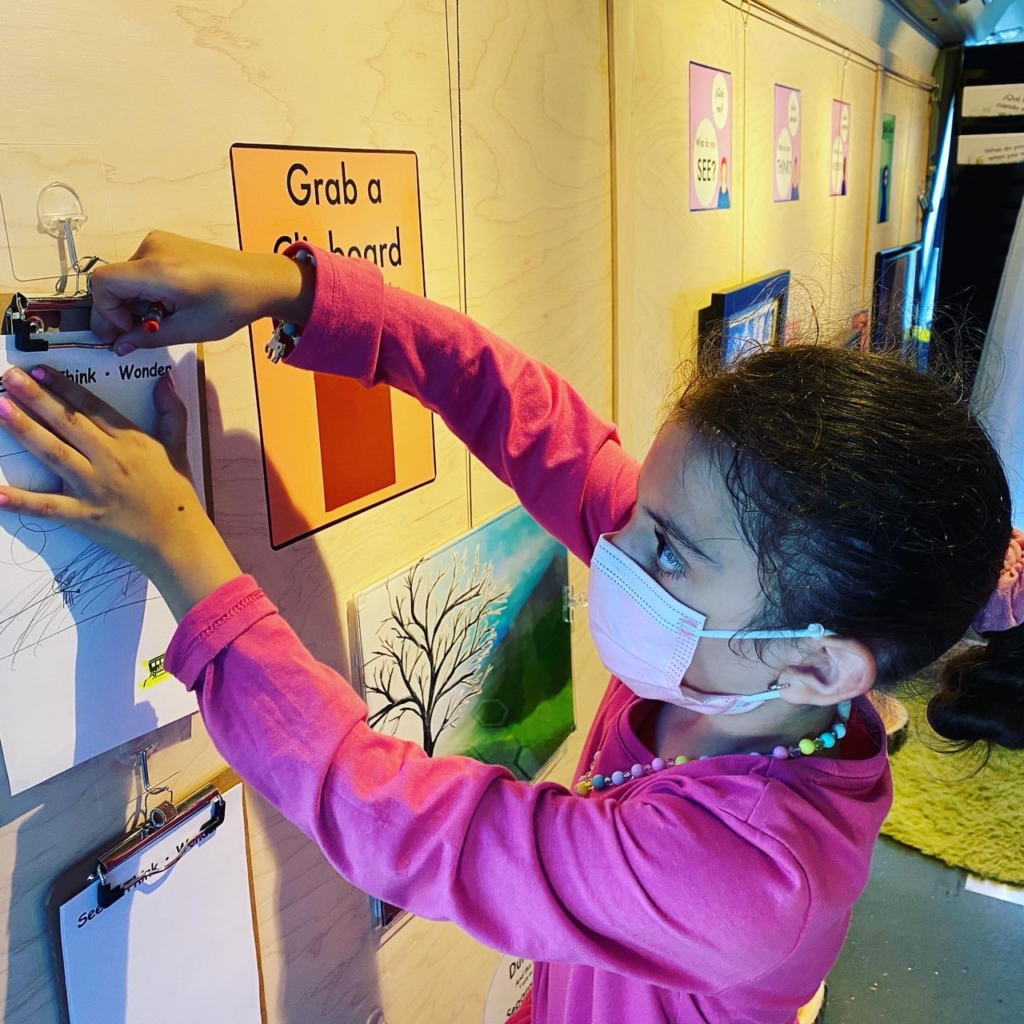Three Simple Steps to Support Children’s Emotional Intelligence and Creativity in Museums

A student participates in a cARTie visit. Photo courtesy of cARTie.
Have you ever listened to children discuss an emotive work of art inside a museum? By visiting an art museum, young children can learn to slow down, lean into simple thinking routines that they may seemingly “carry in their back pockets” and engage in thoughtful conversation about emotions and creativity. Through this, those children may have an increasingly rich educational experience that fully integrates creativity, emotional intelligence and the arts.
Emerging evidence of art museums’ potential for nurturing children’s creativity and emotional intelligence in tandem comes out of careful review of feedback and observational data from cARTie, a new non-profit mobile art museum servicing more than 1,130 PreK-2 students with limited access to the arts in education across Connecticut. cARTie was founded in 2019 with the mission to bridge inequities in education and arts access across the state through its reimagined museum format: a retrofitted school bus turned into a museum gallery on wheels showing an annual juried exhibition of CT high school student art. Now in its pilot year, cARTie shows meaningful impact on school communities as documented in feedback forms, reflections and observational data.
Informed by cARTie’s practice-based research, fully integrating creativity, emotional intelligence and the arts in young children’s museum educational experiences starts with three core pillars.
First, a rich educational experience that fully integrates creativity, emotional intelligence and the arts teaches young children to slow down and spend prolonged time with works of art. Whereas the average museum visitor spends less than thirty seconds looking at a work of art (Cascone, 2019), alternative research pioneered by Dr. Shari Tishman finds untapped potential in slow encounters for more meaningful and long-term learning (Tishman, 2018).¹
Next, with prolonged practice using specific thinking routines to look at art, young children can become increasingly comfortable using and exploring emotions and creativity. Thinking routines were introduced by Project Zero as a framework for scaffolding and supporting student thinking.² Over time, thinking routines may help students prompt themselves to deepen, broaden, expand and/or challenge their own thinking about art or another content area. At cARTie, we have found that when we anchor conversations with young children in thinking routines that prompt both progressively noticing details and embodying and expressing feelings, we support young children’s development of emotional intelligence and creativity in tandem.
Finally, thoughtful conversation about emotions and creativity as tied to emotive works of art in a museum is a difficult art in-and-of itself, but a critical one to master. Works of art are replete with emotions, and when dialogue is facilitated with brave openness and inviting inclusiveness, children can feel comfortable exploring interpretations of emotions in art. Children can practice recognizing and labeling emotions through group observation and conversation, and they can subsequently learn how emotions may be used in creative pursuits like making art.
While art museum missions are myriad, education is often core, and cARTie is a testament to this. While data from cARTie’s pilot program continues to be analyzed through a process of progressive focusing, integrating creativity and emotional intelligence in museum education programming is relevant. Museums everywhere can leverage their potential for providing young children rich educational experiences that not only support their emotional intelligence and creativity development but do so in tandem. At a time when children’s emotional intelligence and creativity development is challenged by the consequences of an ongoing, virulent pandemic, this practice-based research is hopeful and heARTful.
¹ Cascone, S. (2019). The average person spends 27 seconds looking at a work of art. ArtNet. https://news.artnet.com/art-world/slow-art-day-2019-1508566#:~:text=They%20are%20certainly%20rushing%3A%20the,and%20the%20Arts%20in%202017.
Tishman, S. (2018). Slow looking: the art and practice of learning through observation. New York: Routledge.
² http://www.pz.harvard.edu/thinking-routines



